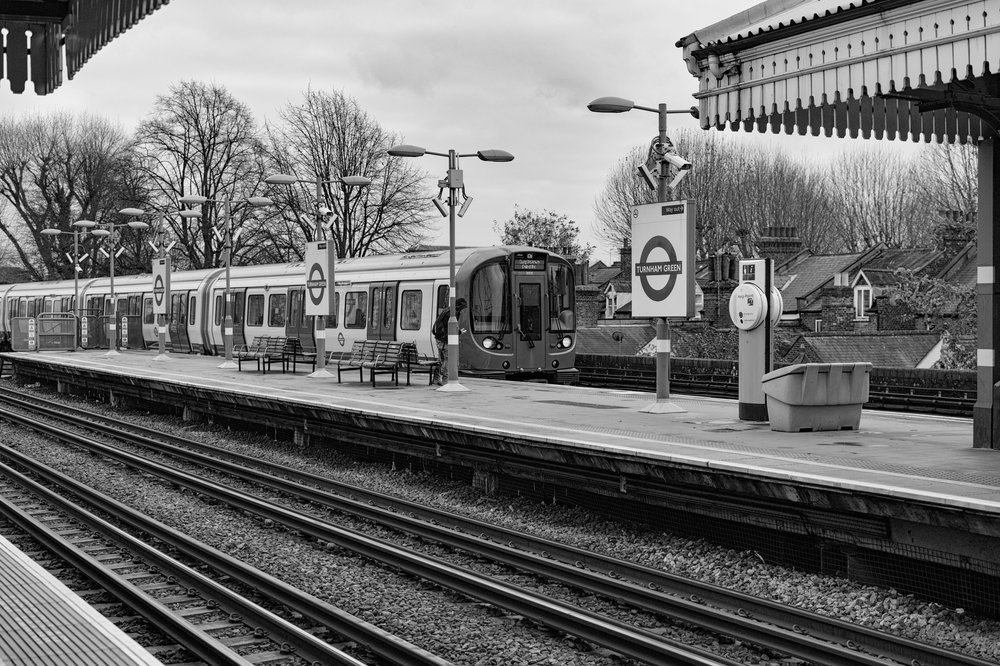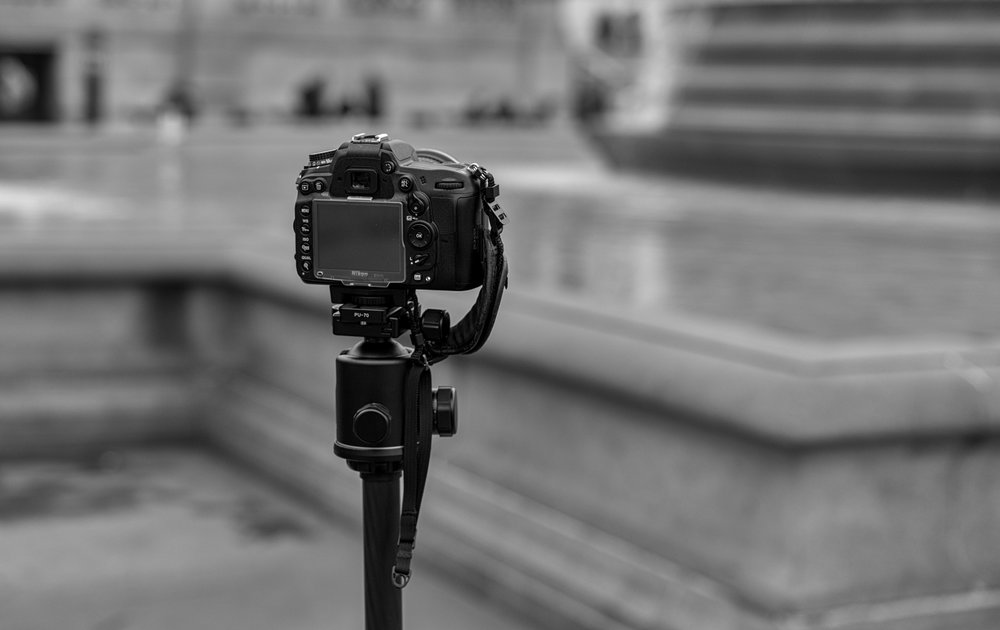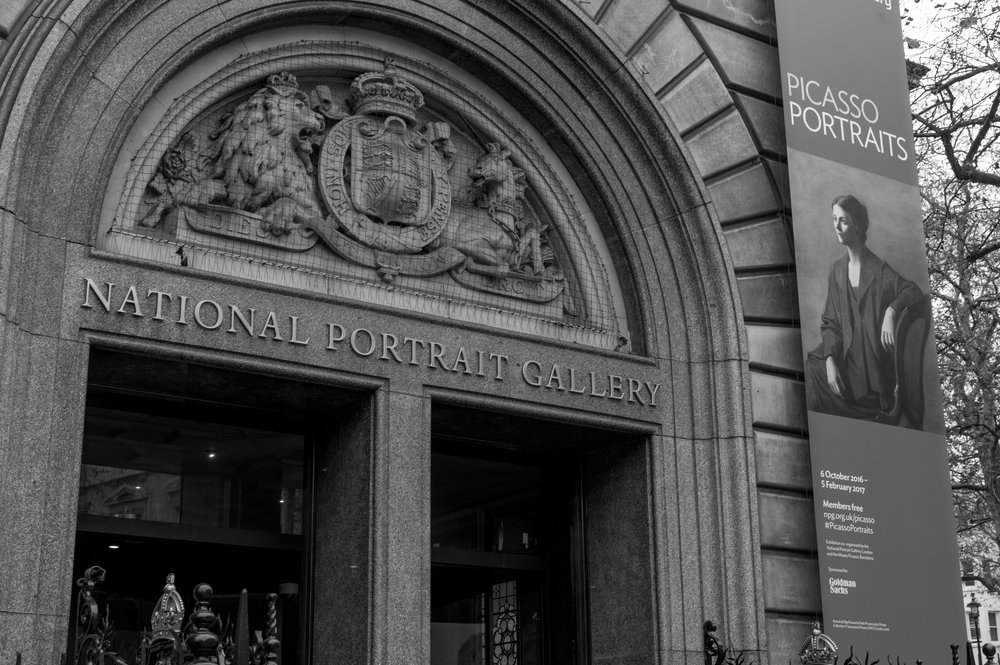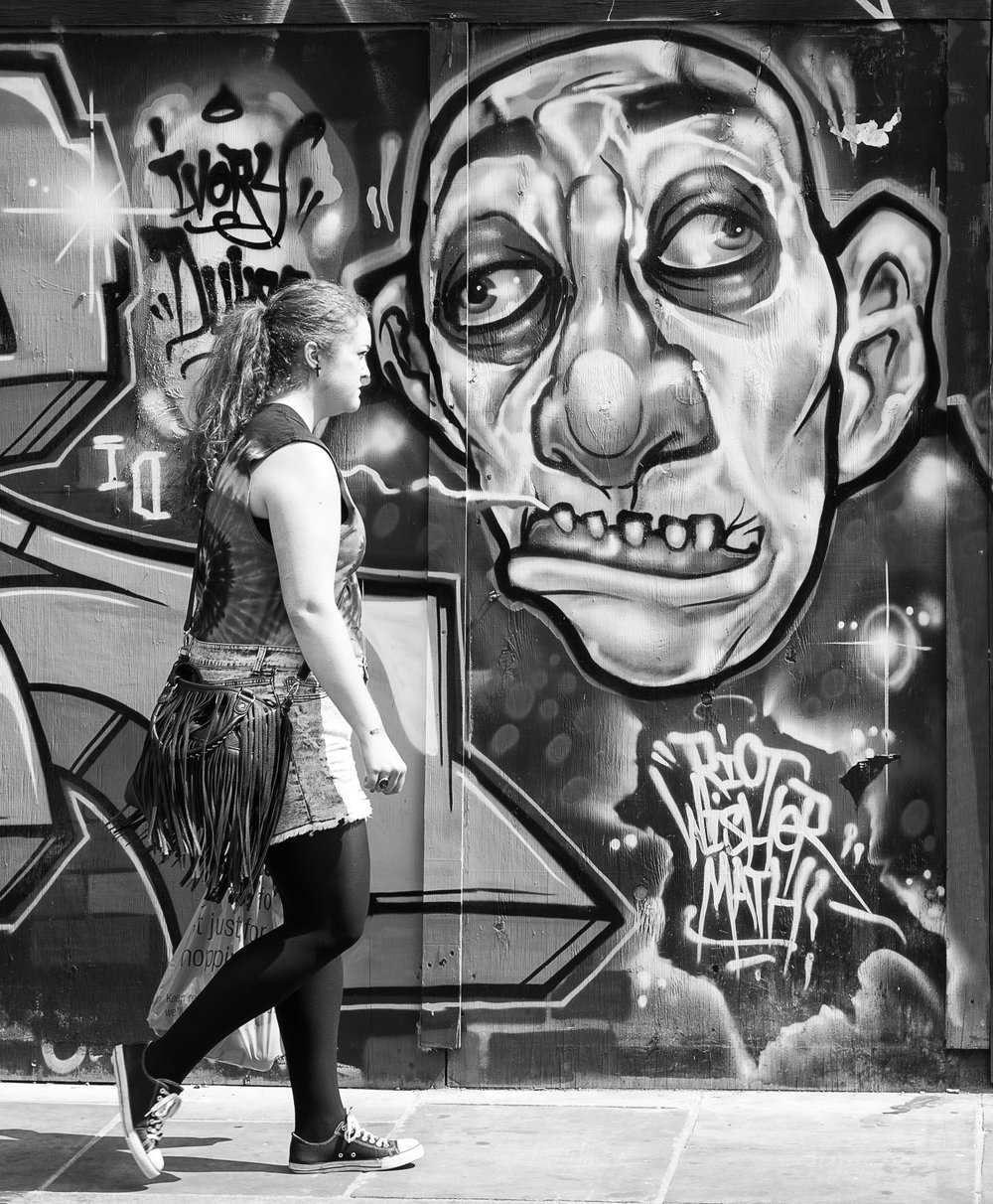
I have just scratched a long-bothering itch. I acquired a low-mileage Leica Monochrom, the Mk.I, M9-based camera that had been written off by the cognoscenti less than a year ago.
As you know, I’ve had my eye on an outdated, secondhand old Leica M9 for months. I’ve been biding my time. You see, there’s been a resurgence in demand for this old 2009 snapper over recent months. Leica digitals appear to defy the theory of digital rot as I wrote only last week. And older models are being recognised as a good buy: They took good pictures when new, they take the same good pictures now.



The old girl went through a bad patch about 18 months ago when her sensor started corroding and owners were faced with a €1,000 repair bill. Shock, horror ensued, egged on by a great wailing and gnashing of teeth from various forum denizens. This was followed by a massive unloading of used M9s and a corresponding drop in prices. It was a true bursting of a bubble and, at one stage, some dealers were refusing to buy M9s or, even, take them in part exchange.

Knight to the rescue
Then Sir Wetzlarhad rode in on his white charger and assured all M9 owners that their sensors would be exchanged free and would be fully warranted for the future. Relief. Everyone started buying back their M9s, many maintaining they had always preferred the non-live-view CCD sensor and the enhanced creativity that comes with an ISO sensitivity that blushes mightily at a modest 1600.
This heralded a rebirth of the M9 (and its derivatives including the Monochrom and M-E). There were shocking stories of people trading in their belled and whistled M240 videomatic wonders for the perceived simplicity of the M9, Leica’s first full-frame digital. I have several friends who have gone backwards like this. How could this be?



This love affair with the M9 is showing no signs of abating. Last Saturday I called in to Red Dot Cameras in London for a chat, not intending to buy anything. Was I still interested in an M9 asked salesman Ash Smith: “Because if you are we don’t have any”. The cupboard was as bare as Old Mother Hubbard’s, despite the arrival of several new display cabinets from Leica. Ash offered to bear me in mind if one came in, but they are getting hard to find he warned.
What a turnaround from last year when serried ranks of M9s were lined up at Red Dot like so many dusty terracotta warriors marching to oblivion.

Bargain hunters
Some of this lack of stock is down to European and other foreign bargain hunters lured to British web sites by the fall of Sterling. M9s (along with most other used Leicas) suddenly became bargains and were snapped up. But more likely it is the new beatification of the M9 that has cleared the shelves.
What Red Dot did have, though, were three Mk I Monochroms: A smart silver number and a couple of black beauties. I decided to put my money alongside my admittedly large mouth and came away with a pristine and very low mileage black MM (1,000 actuations to be precise). Now is the chance to do a repeat of my original Monochrom review. Will I still be enthralled? Is it better or worse as a photographic tool than its successor, the M246 Monochrom?

What I do know is that it is different, but different in a rather appealing way. It’s smaller, feels better in the hand and somehow just more right — more film camera that the rather portly M240 and its M246 derivative. It seems to be barely bigger than the M4 and MP film cameras I’ve been using these past couple of weeks, although we know this is not true.


It differs in use, also, with its extra noisier shutter and rather endearing “discreet” and “delayed” mode which enables you to take a relatively unobtrusive shot, keep your finger on the button and walk a few hundred yards down the road before release: Whir, whir, all out of earshot of the unsuspecting subject as the shutter resets. Now why didn’t anyone think of this before? Street photographers loved it but, sadly, this feature didn’t find its way to the M240.
In common with my screenless M-D, the M9 is definitely not a chimper’s delight. The M9 screen is small and bordering on useless, a disappointment for in-camera editors everywhere. It does make a good menu window, though, and will suit me. I remember writing some four years ago that a new MM owner, having spent the best part of £6,000 on the camera and taking a look at the first shot on that toy screen would be tempted to slit their throat. But get the SD card home, open the file in Lightroom and all is forgiven. Suicide would indeed have been premature, as is usually the case. Simply because the Monochrom is a delight.
Some examples from the original test in 2013 (click to enlarge)






In business again
I dug out my M9 ThumbsUp grip, slapped on a wrist strap and I was in business. I even found a couple of spare batteries in my sundries box. Such is the advantage enjoyed by the retronaut.
As an experienced Mk.I Monochrom owner I dialled down the exposure compensation by -0.7EV because I know that this camera hates highlights but loves murky, darkly depths. You can do nothing with a blown highlight but you can draw detail from the jaws of hell with this monochrome sensor. I remember David Slater of Leica in London explaining to me in great detail how the CCD monochrom sensor displays an extraordinary dynamic range. It was all something to do with layers of information, most of which sailed well above my head. But he has a point, as any Monochrom Mk.I owner will confirm.
What is beyond dispute is that a monochrome sensor dedicates every single pixel to shades of grey. With a colour array, copious pixels are hived off to render colour. It stands to reason, then, that there are benefits in having every pixel singing from the same grey hymn sheet. A monochrome sensor can punch above its weight in comparison with a colour sensor; and that is the secret of the Leica Monochrom.

Lens? What other than the 50mm Apo-Summicron-M, the sharpest knife in the box, a lens which was introduced specifically to complement this first-generation Monochrom when it was announced in Berlin four years ago in May 2012.
I also tried out the vintage 1950s 28mm f/5.6 Summaron button cell for a shot or two. Look out for the distinctive vignette in the riverscape. The pictures from the 2013 test of the Monochrom were largely through the glass of the 50mm Summicron (not the Apo) and the 75mm Apo-Summicron.
I can now wallow in bucketfuls of nostalgia with my Mk I Monochrom. I’ve owned it before, I’ve owned the later Mk.II M246 Monochrom. All have gone in favour of the M-D, until this weekend my sole M digital. You may think me mad, but I see a certain “keeper” aura about the first Monochrom. It remains to be seen. First I have to decide if it matches up to my original review conclusions in 2013.
While I’ve taken a rather lighthearted view in this first impression article, I realise that black-and-white photography is not for everyone. It is definitely specialised. But if you like B&W and need to get the best out of it, a monochrome sensor is the way to go. In fact, I am surprised that four years after the launch of the Mk.I Monochrom no other manufacturer has produced a black-and-white sensor. Again, Leica came up with something we didn’t think we needed. But we like it.
If you’re in the market for an M9, M-E or Monochrom you have to look a little harder these days. At least I know that Red Dot Cameras currently have two Monochroms on the shelf. I doubt they will be there for much longer. For an M9 you might have to put your name on a waiting list. M9s on back order in 2016, whatever next?
________________
- Subscribe to Macfilos for free updates on articles as they are published. Read more here
- Want to make a comment on this article but having problems? Please read this

Great Article Mike – I really enjoyed it.
I still have my original MM, which I used in China (much to my wife’s distress – she likes colour). http://www.slack.co.uk/slack/Monochrom.html
I have a 6 ft copy of this image on my wall at work, which I always look at when I think I need more mp (you can see every leaf from 18" away).
http://www.slack.co.uk/newsite/2012/henri/views/large-48.html
I was really passionate about this camera, and together with my M9, they still sit in the cabinet (the MM246 was sold to fund something important).
As you know, I’m not an advocate of the "CCD is better" school, but the original Monochrome was a brave and exciting venture, and (thanks to your article) tomorrow I’ll be taking mine out for a spin!
Thanks, Jonathan. I’m impressed you still own both an M9 and MM Mk.I. Hold on to them! A couple of wonderful pictures there. I firmly believe there is a unique signature to the Mk.I. Incidentally, reading you review again I realised I missed a trick in not referring to my new camera as Henri….. The HCB allusion certainly sums up this camera. I’ve been using it now for a few days and am beginning to realise what I’ve been missing.
Oh Yes
I always think of mine as Henri – not sure about any unique signature, but certainly an excellent one!
"… enables you to take an unobtrusive silent shot …" unobtrusive silent ?? Even with the "discreet" feature, silent is not what I would call the M9 shutter but any stretch of the imagination. If only the M9 and siblings had the shutter of the M262 it would almost be the perfect digital M. Actually, as I’ve said before, put the MM1 sensor in an M-D body and it would be mine, mine, mine 🙂
Of course you are right, Ian. I try not to let facts get in the way of a good story. What I meant was "discreet" which, to be fair, is what Leica called it. At least the unsuspecting victim is spared the grinding of the recock if you select "delay"!
Thanks for continuing my Leica education.
A pleasure. Glad you enjoyed the article.
I’ve spent part of last weekend comparing more or less standard outputs from different raw converters. I use Olympus cameras and Linux as the preferred OS on my machine, so no Lightroom et al.
For colour in most cases Darktable won; for b&w it’s actually the Olympus Viewer 3 software which can be downloaded for free if you have a serial number of one of their cameras. Who would have thought?
Oh, and of course these cameras wouldn’t hold a candle to a Leica Monochrom, but still I love the output. Here I used at least some Leica-related (but Panasonic-built) lens:
https://www.flickr.com/photos/wjlonien/30499544934/
Thanks for your articles, even if I can’t afford even a used Monochrom (or a Summicron or -lux for it).
Thanks, Wolfgang and I’m sure readers will find this interesting. Thank you also for your kind comments.
Mike
A really interesting saga, well told, of the make the market and the magic……..
Thanks, John, glad you enjoyed it.
William…..a few years ago I wanted to really give B&W only a go and see where it took me. The only camera I owned was the original monochrome for 18 months (sold it as was out of photography action for some time).
No regrets at all. Id highly recommend taking the leap of faith and pushing your photography along for a year or so.
I shoot film now though considering a nice M9 with new sensor.
Enjoy Michael!
Thanks, Andy…. I think for a B&W-only project the Monochrom is a good discipline, equivalent to buying a fridge full of FP4 or Tri-X and deviating not one jot.
Thanks Andy. I tried some shots today on an X-Pro 2 with the ACROs setting with red filter. The output was very nice, but Jpeg only. The possibilities with Lightroom were reduced, but I did not have the usual issues with RAF images in Lightroom; so some plus and minus points already. I will try my M240 with B+W Jpegs in the next few days. I also took out a subscription to Black + White Photography Magazine on my iPad today. My first steps on a monochrome journey.
William
I purchased my M-D with the promise, to myself, that I would punish my lack of control through sacrifice of either the M9, or the MM1 already in my possession. It seemed obscene to own all three…. Surely, one would go unused. Not the case: I cannot bear the thought of giving up any of them. They all bring something different in their identical silhouettes. I have eyed my Xpro2, but as it represents all the techno-wizardry, i.e. live view, that I have been deprived of in Leica digital camera selection, it, too, will likely stay.
Thanks for the great write-up. To elaborate on one thing about the MM1, a thing that I find very important in its consideration: it is a camera, in the hands of an amateur, such as myself, that demand high contrast scenery to produce captivating imagery. I would be in trouble if it were my only Leica digital.
Wayne, thanks for the additional info. I sort of know what you mean about the Monochrom and contrast. Certainly the RAW files are exceedingly flat and uninspiring, but they do respond well to a bit of the Silver Efex Pro treatment. I think all the info is there, it’s just a matter of extracting it in an appealing way.
Plenty of food for thought here and some nice photos, Mike. I have been thinking about the Monochrom myself, but I only convert about 20 to 25% of my photos to black and white, using Nik Silver Efex from Lightroom. I would like to improve my black and white photography as I am hugely impressed every time I pick up Black + White Photography Magazine. What I have decided to do is to try to stick to a routine of black and white only for the first 3 months of 2017. I will initially shoot black and white Jpegs only, perhaps with in-camera filter effects, if available. The objective of this exercise is to see if I can live with black and white images only.
As I understand it, the Monochrom is the only digital camera that will produce black and white RAW images. These contain more information about blacks, whites and greys and will, therefore, give a black and white image with more depth and information. Any filter effects, eg red filters for darker skies have to be added by means of post processing software. With black and white Jpegs from other cameras some in camera filters can be added, but they too can be added in post processing. Correct me if I am wrong on any of the technical details. As well as seeing if I can live with black and white only, my proposed exercise is also intended to see what ‘stops’ I run up against that only a Monochrom can resolve. I am a firm believer that the photographer is more important than the camera, but maybe this exercise could prove me wrong and there may be a Monochrom in my future in 2017. I will report progress.
William
PS I am still trying to work out what the photographers were doing with tripods in Trafalgar Square last week. ‘Milky water’ cliche shots for camera club competitions? Turnham Green Station certainly looks well in your photo, better than it looked when I passed through it last week on my way to Kew Gardens.
William, you are absolutely right about the relationship between a monochrom and colour sensor. The two Monochroms are indeed the only cameras that produce RAW B&W. I remember analysing this in relation to the M246 with its 24MP sensor. In Monochrom it can equal or exceed a 36MP colour sensor because of that dedication. Every little pixel is doing its B&W thing instead fiddling around with colour. This is the secret of the Monochrom and, although conversions can look good, there is more dynamic range in the Monochrom RAW.
As for tripods, I also wonder what draws people to that sort of photography but there’s no accounting for taste. Even in Underground stations…..